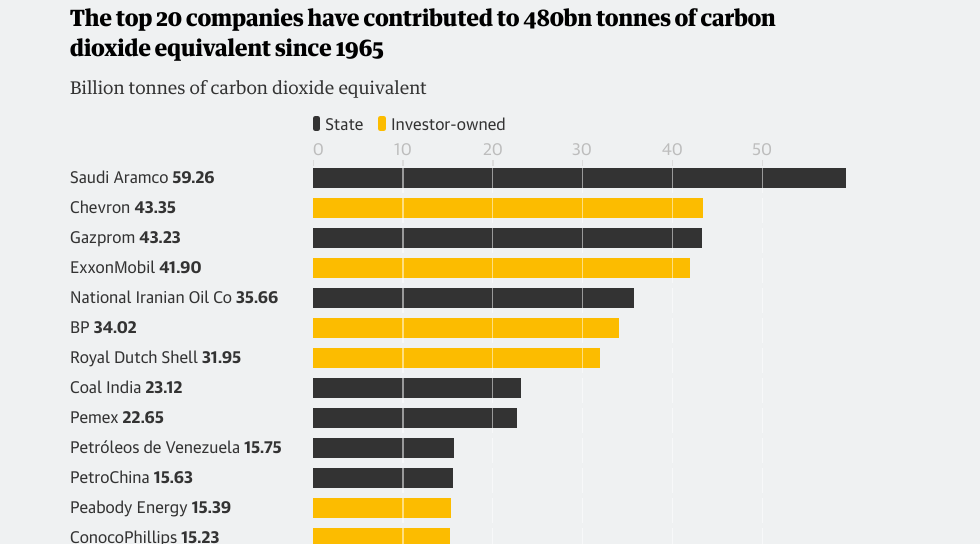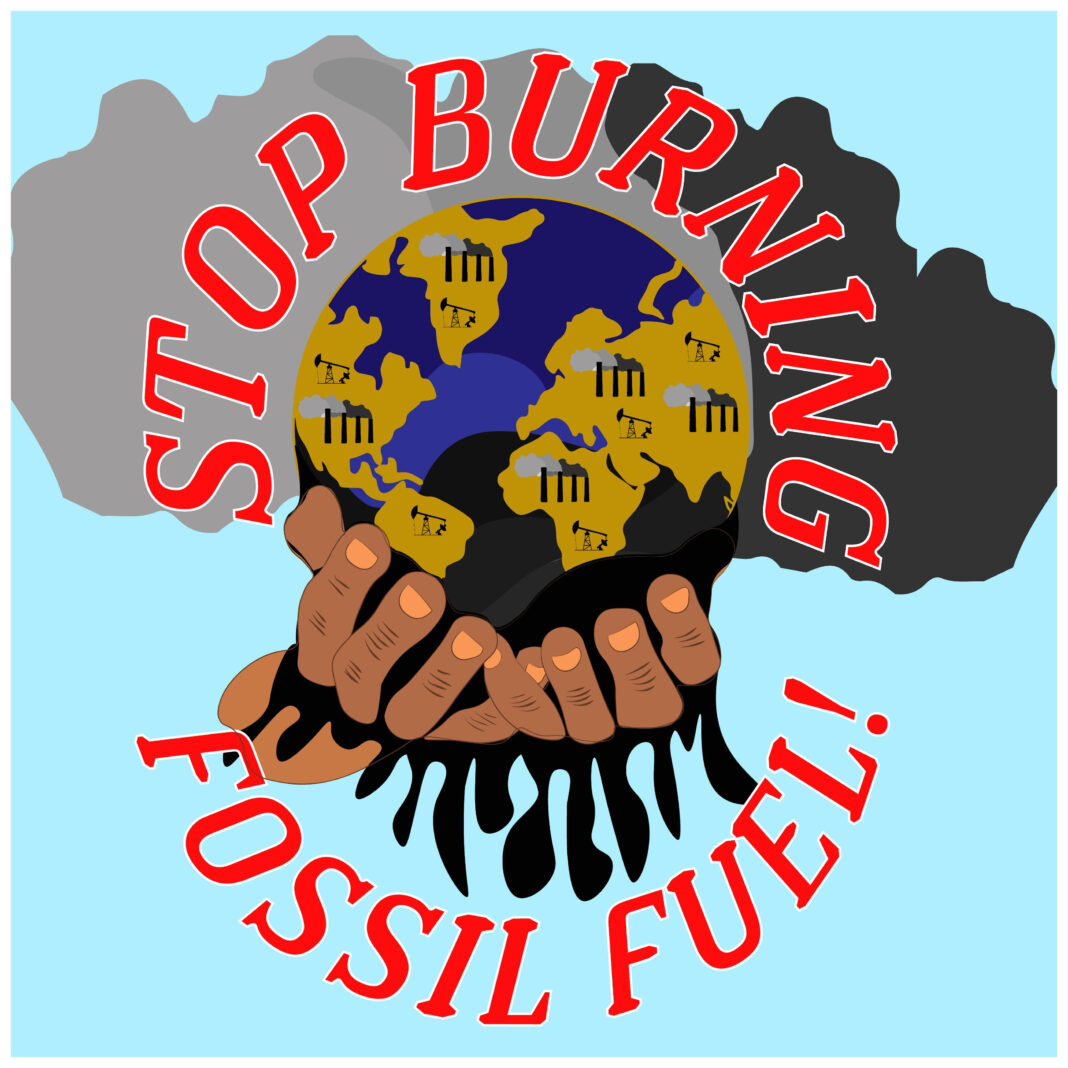Greta Thungberg has been one of the most prominent in the media of Gen Z’s climate change protestor and the youngest. At age 15, she skipped school to sit outside the Swedish parliament every Friday, holding her “on climate strike” poster to raise awareness of our planet’s climate crisis. Many European students soon joined, with thousands choosing to skip school to protest against their leaders who don’t see the urgency of climate change. Thus, one of many youth-led climate movements named “Fridays for Future” was created by these students and activists uniting all across the globe to organize protests, creating smaller grassroots movements and worldwide campaigning.
This created a ripple effect among activists and organizers, with hundreds of young people creating organizations locally and internationally. Not only that, but Greta has also brought attention to the world’s biggest polluter: fossil fuels. It’s important to note that it’s never been the working class’s fault for the cause of climate change. We grew up thinking that using fewer plastic bags or switching to biking would solve the ‘climate change problem.’ The reduce-reuse-recycle narrative being taught to us as kids, and ultimately, the responsibility of creating a plastic-free world falls on us.
The plastic industry has convinced us that recycling will reverse the toxic impact of plastic—while it keeps right on polluting. Climate-conscious individual choices are good – but not nearly enough to save the planet. Where do plastic bags needed for our weekly grocery shopping come from? Or the oil in our cars that we need to commute to work? Fossil fuels. We also heard of ‘your carbon footprint,’ a term created and introduced by BP, the oil giant, in 2005. This online calculator allows one to find out their environmental impact, thus individualizing the climate crisis, focusing more on how to change our lifestyle rather than the petrochemical companies pumping fossil fuels off the ground. The energy, transport, and manufacturing/construction industries are the top three biggest polluters, with a combined output of 30.56 billion tons of GHG yearly. Although we hold the power to adopt sustainable practices, it’s only a tiny percentage compared to billion-dollar industries and their roles in the climate crisis.
The fossil fuel industry accounts for over 75 percent of global greenhouse gas emissions and nearly 90 percent of all carbon dioxide emissions. According to the Intergovernmental Panel on Climate Change (IPCC), around 70% of carbon dioxide emissions stem from just 100 companies worldwide. With these statistics, it’s time to realize that it’s not up to us, the general population, to resolve this crisis on our own. Instead, our only job is to push for systematic change, advocate to invest in renewable energies, prompt policy changes within these industries, and push our leaders to provide services to help those directly affected by climate catastrophes.
The real polluters of the world
The big oil tycoons—oil companies like Chevron, Exxon, BP, and Shell. JPMorgan Chase, Wells Fargo, and Bank of America. The oil and gas industry earned $4 trillion last year. Members of Congress also own up to $93 million in fossil fuel stocks. These corporations and investors have fought for years to spread counterfeit science facts, and lobbyists are influencing politicians and regulators—all with the financial backing and support of major fossil fuel companies.

Millionaires who invest in oil and energy industries are against fossil fuel regulations or are usually the ones who believe climate change is a ‘hoax.’. Leaked documents show that the world’s largest fossil fuel companies have deceived the public for nearly 30 years about the realities and risks of climate change. The amount of CO2 in the atmosphere has been increasing at a striking rate since the Industrial Revolution, when manual labor began to be replaced by machinery fueled by coal, oil, and gas. The IPCC warns that fossil fuel emissions can be halved within 11 years if global warming is to be limited to 1.5c above pre-industrial levels. This statistic brought world governments together to create the 2015 Paris Agreement to reach the goal of limiting global temperature increase. Transformation in the energy, industries, and food systems is crucial to reduce these emissions. Government officials and politicians need to stand firm on that and fight for political change to get there.
At the COP28 UN Climate Change Conference in Dubai, with over 130 Heads of State and Government in attendance, it was addressed that the world needs to catch up in reaching the Paris Agreement deal and that progress needs to be faster across all areas of climate action. The final decision called on all governments to speed up the transition from fossil fuels to renewables, such as solar and wind power.
“HERE IS A PROBLEM THAT TRANSCENDS OUR PARTICULAR GENERATION. IT IS AN INTERGENERATIONAL PROBLEM. IF WE DON’T DO THE RIGHT THING NOW, OUR CHILDREN AND GRANDCHILDREN WILL FACE SERIOUS PROBLEMS.” –CARL SAGAN
It is rare for political leaders to be open about the climate crisis. Al Gore, who ran for the presidency in the 2000 election against George Bush, focused his political career on climate change. For the last 40 years, Al Gore has been at the forefront of the climate movement and has played a crucial role internationally in promoting global action and creating projects for the cause.
Colombian President Gustavo Petro, who took office in 2022, made decarbonization and environmental protection a central mission of his government. During an address at the UN in April 2023, he stated that if oil is removed from the earth, humanity will perish. His plan is a ten-year strategy to invest 200 million USD to reach zero net deforestation by 2030.
It is essential also to backtrack 35 years ago; in 1985, an American astronomer and scientist named Carl Sagan testified before Congress and warned that human activities, primarily the burning of fossil fuels, were intensifying this effect and leading to global warming. He warned of melting ice caps, rising sea levels, and frequent extreme weather events. Sagan’s predictions about the consequences of inaction are strikingly similar to today’s realities. Greenhouse effects have a long-term impact, and it is up to the current generation to take action so that the next generation can live their future in peace and with clean air. Fast forward to today, and we now see for the first time that the future of the world, the younger generation, is taking a stand against the adults who created this catastrophe for our world and its most vulnerable people.
Youth as catalysts for change

Climate Defiance
A youth-led organization; its slogan is WE DO NOT DO PETITIONS. WE DO DIRECT ACTION. Their protests often involve disrupting public events and embarrassing the oil tycoons where politicians like Joe Manchin, a coal industry West Virginia senator who earned himself millions by his private coal business and using his political power to stop clean energy protests. They stormed into a meeting he was giving at Harvard University, blatantly telling him, “Protect our future, not your profits!” Watch the video here.
EXTINCTION REBELLION
Their ideology is that “Government must create and be led by the decisions of a Citizens’ Assembly on climate and ecological justice. Extinction Rebellion uses mass arrest as a tactic to generate attention to their cause by wasting police time and disrupting others. Extinction Rebellion’s founders researched the histories of “the suffragettes, the Indian salt marchers, and the civil rights movement.
Youth v. Gov
Young climate leaders in this organization are taking legal action against their governments by suing them directly. The world’s only non-profit public interest law firm dedicated exclusively to securing the legal rights of youth to a healthy atmosphere and safe climate. Here is a list of some ongoing cases:
- Juliana v. United States
- Held v. State of Montana
- Natalie R. v. State of Utah
- Layla H. v. Commonwealth of Virginia
- La Rose v. His Majesty the King
- Jóvenes v. Gobierno de México
April 22nd is Earth Day, a reminder that Mother Earth pleads with us to care for her. The youth is listening, as there will be a global climate strike this April 19, 2024. The first time Earth Day was celebrated was April 22, 1970, and it was created by Senator Gaylord Nelson, senator from Wisconsin, with his concern about the deteriorating environment. With this becoming our reality, the youth is the voice for the environment in all its aspects. Official Earth Day campaigns and projects aim to increase environmental literacy and bring together people or groups to address deforestation, biodiversity loss, and other challenges. Although we are still far from reaching net zero emissions by 2050, let us not look at this as a defeating statistic. Instead, it’s time to be assertive with our world leaders, who can influence others and change the system from within. That change will save the world’s future and give our grandchildren a healthy Mother Earth until the end so humanity can continue evolving and creating a world of peace.
El Tribuno del Pueblo brings you articles written by individuals or organizations, along with our own reporting. Bylined articles reflect the views of the authors. Unsigned articles reflect the views of the editorial board. Please credit the source when sharing: tribunodelpueblo.org. We’re all volunteers, no paid staff. Please donate at http://tribunodelpueblo.org to keep bringing you the voices of the movement because no human being is illegal.




Love this well written, thought provoking article! Keep up the good work!